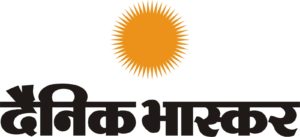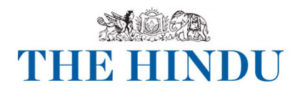
29-12-2016 (Important News Clippings)
To Download Click Here
A Volatile Year
2016 ends with the economy facing headwinds, reform is the only antidote
As far as the economy is concerned, 2016 could be characterised as a year with two halves. It started with things looking up for India. The global situation, on balance, was benign. The foreign policy energy displayed by the Narendra Modi government was beginning to bear fruit and India was the bright spot in a world searching for growth. To its credit, the government was looking ahead and trying to reconfigure India’s economic architecture through new institutional mechanisms, such as the one to tackle monetary policy. However, over the second half things unravelled both at home and abroad.
Indian economy is tightly integrated with the world through trade and capital flows. With Brexit in the UK, protectionist signals from Donald Trump who won presidential elections in the US and now with the Opec cartel working to cut production and push up oil price, India’s external economic environment has worsened. So far, India has experienced its best years when trade and capital flows were relatively unhindered. The bad news is, that may be about to come to an end now.
Inflation is under control at the moment, but RBI’s new monetary policy committee has signalled its anxiety about the future. Exports, an engine of growth, have been tepid for the most part – threatening ‘Make in India’. And the collapse of investment demand globally coupled with India’s banking problems means that private investment has never been this weak in a long time. Industrial activity in the second half of the year was weaker than anticipated. These challenges were compounded by the demonetisation exercise in November. Demonetisation has taken a toll on consumption demand, which has been the economy’s mainstay.
The way ahead must be to first deal with the immediate disruption caused by demonetisation. RBI and finance ministry must remonetise quickly. Subsequently finance minister Arun Jaitley must deliver on his fourth budget, which will be a make-or-break one not just for the country but also for NDA. It needs to be a feel-good budget, which can be supplemented by the rollout of goods and services tax (GST) – the big reform the Modi government has pushed forward. The best antidote to uncertainty and a sputtering economy is reform. Prime Minister Narendra Modi must use his considerable political capital to initiate significant changes in the way India’s economy functions.
गरीब कल्याण योजना : लाभ लेने से पहले देना होगा 50% टैक्स
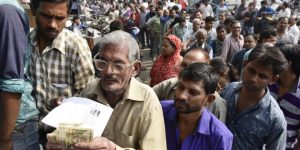
स्कीम के तहत अघोषित आय का खुलासा करने वालों के नाम सार्वजनिक नहीं किए जाएंगे। किसी ने स्कीम में कालेधन का खुलासा नहीं किया, और कम टैक्स देने के मकसद से उसका रिटर्न फाइल किया तो पकड़े जाने पर 77.25% टैक्स और जुर्माना भरना होगा।अगर किसी ने तो स्कीम में कालेधन की जानकारी दी और ही उसका रिटर्न फाइल किया तो टैक्स और जुर्माना 85% होगा। उन्हें सजा भी हो सकती है।
- जिन पर भ्रष्टाचार, बेनामी संपत्ति रखने, मनी लॉड्रिंग, फॉरेन एक्सचेंज नियमों के उल्लंघन या ड्रग ट्रैफिकिंग का मुकदमा चल रहा हो।
- जिन पर विदेशी कालाधन एक्ट के तहत आरोप लगा हो।
- ऐसे लोग जिन्हें इन कानूनों के तहत हिरासत हुई हो
- कंजर्वेशन ऑफ फॉरेन एक्सचेंज एंड प्रिवेंशन ऑफ स्मगलिंग एक्टिविटीज एक्ट, 1974.
- नारकोटिक ड्रग्स एंड साइकोट्रोपिक सबस्टेंस एक्ट, 1985
- अनलॉफुल एक्टिविटीज (प्रिवेंशन) एक्ट 1967
- प्रिवेंशन करप्शन एक्ट, 1988
- प्रोहिबिशन ऑफ बेनामी प्रॉपर्टी ट्रांजेक्शन एक्ट, 1988
- प्रिवेंशन ऑफ मनी लॉन्ड्रिंग एक्ट, 2002
[इनके अलावा ऐसे लोग स्पेशल कोर्ट (सिक्युरिटीज के लेनदेन से संबंधित अपराधों में ट्रायल) एक्ट, 1992 की धारा 3 के तहत नोटिफाइड हुए हों।]
Neither cultural nor revolutionary
In the government’s new ‘cultural revolution’, culture becomes a mask to hide material realities
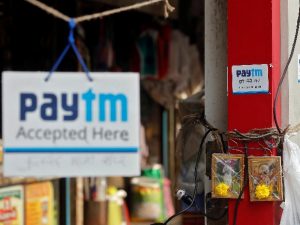
Demonetisation is an event of biblical proportions. But even as its economic consequences are discussed, what goes unnoticed are the new cultural imaginaries that are sought to be put in place. Rather than see demonetisation as only an economic measure to curb corruption, the government wants to usher in “a behavioural change at all levels of society”, which is a part of “the grand ‘cultural revolution’ that the PM is working on” (M. Venkaiah Naidu in The Indian Express, Nov. 29).
The problem is that this cultural revolution is neither cultural nor revolutionary. Culture becomes a mere appendage to technological transformations which still mask material exploitation. In this cultural revolution, the government still needs lucky draw contests (and prizes worth Rs. 340 crore) to incentivise digital payments and behaviourial change. Also, the revolution will be ushered in through an executive fiat from above rather than it emerging organically from the people.
Emptiness of words
Technology is the fulcrum of the new cultural revolution. As the Prime Minister puts it, in ‘Digital India’, “your phone is your wallet.” But when Dylan becomes yoked to the project of Cashless India and Digital India, culture becomes instrumental and hollow. Otherwise, how is The Times…, reflecting the American youth’s anger against imperialism perpetrated by their own government, quoted by a government that has come down heavily on dissent?
The cultural revolution is supposed to completely overhaul the system. In a reference rich with religio-cultural symbolism, the Prime Minister calls demonetisation a “yagna against corruption, terrorism and black money.” There is, of course, tremendous hardship for the people. But he asks them to endure it to make the nation great and modern. Remarkably, in this vision, there are no cultural revolutions to annihilate caste, the most important barrier to India becoming modern. Nor there are yagnas against class and gender exploitation.
In this cultural revolution without culture, anything goes, so the Prime Minister can wish that “the youth seize the moment and be the winds of change” even after his government has virtually criminalised any youth politics unpalatable to the state. Or a Union Minister can also quote Dylan to critique patriarchy in Muslim community, but not patriarchy among Hindus.
No critical pedagogy
Such a conjuncture is itself a result of India’s failure to build a critical pedagogy. Instead of questioning the fundamental bases of exploitation, the entire pedagogy has been built on a technocratic understanding of society catering to building “meritorious” citizens, a society which merely reinforces existing hierarchies. In this pedagogy, as the philosopher Ivan Illich put it, “medical treatment is mistaken for healthcare, social work for the improvement of community life, police protection for safety, military poise for national security, the rat race for productive work.”
It is on this ground already ploughed by conformist currents that the seeds of the new cultural revolution are sown. How else does one explain sections of the most “educated”, including in the bureaucracy, with a bird’s-eye view of governance, seeing demonetisation as a panacea to all our ills? The crux of technocratic thinking is to paper over systemic causes of issues such as poverty and prescribe technological fixes.
The root cause for our misery in this technocratic vision is a culture steeped in corruption. While there is truth in this, the decadent culture is not caused by the ruling classes in general, but only, as a government representative puts it, “encouraged by Congress and its friends all these years in power.” Again, the accumulation of privilege by the upper castes/classes or of the state-sanctioned plunder of public wealth, forests, minerals, etc. by the ruling classes goes unmentioned.
When one identifies the problem as such, the solution can only be superficial. Demonetisation becomes a magic wand to end corruption. When the Prime Minister tells a rally that the rich are queuing up at the houses of the poor to seek their help in depositing black money, he is not referring to the ultra-rich in India. So, the cultural revolution is already making a distinction between the rich themselves.
In this cultural revolution, culture becomes a mask to hide fundamental material realities. Thus, it does not tell us that the top one per cent of people own 58.4 per cent of the country’s wealth. When the bottom 50 per cent own only 2.1 per cent of the wealth, how does the promised manna of a few thousand rupees in Jan Dhan accounts alter anything?The staggering levels of inequality have very little to do with black money held in high denomination notes, but are a result of a skewed distribution of wealth, resources and power legally enforced. That among the prominent economies of the world, India is only second to Russia, which is known for its mafia capitalism, in terms of the wealth owned by the top one per cent says something about our rapacious model of development, especially under liberalisation.
The cultural revolution does not tell us that the revenue foregone by the government in corporate income tax, excise and custom duty since 2005-06 is Rs. 42 trillion — an amount which can fund the National Rural Employment Guarantee Act for over 100 years! Neither does it tell us that state-owned banks have written off Rs.1.14 lakh crore of bad loans from 2013 to 2015 or that just two corporate houses alone owe over Rs.3 lakh crore in debt to the banks.
The tragedy is that the questions not asked by the cultural revolution are left unasked by popular discourse. And they will not be until we are prisoners of what the cultural theorist Henry Giroux calls as the “relentless activity of thoughtlessness” fostered by dominant power through its cultural apparatuses. What they do is to transform the genuine aspirations of the people for equality, a corruption-free society and anger against the existing system into sanitised expressions like demonetisation which do not fundamentally challenge the system.
It is in the absence of a genuine cultural revolution that we have reached a conjuncture in which a nation as diverse and unequal as India is asked to place its hopes on an individual leader as a talisman for a cultural revolution. A cultural revolution in which mobile phones will herald a corruption-free society. To unveil this cultural revolution, we need to go back to deciphering Dylan ourselves.
Nissim Mannathukkaren is Chair, International Development Studies, Dalhousie University, Canada. E-mail: nmannathukkaren@dal.ca
Date: 28-12-16
Excluded from financial inclusion
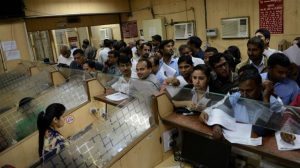
The hurdles for disabled people to access banking services are plenty. Many disabled people, especially in rural India, find it difficult to sign bank documents, and are denied ATM cards, cheque books and Internet banking. The majority of commercial banks have archaic rules in their statute books which debar people with disabilities from opening independent accounts. Persons with disabilities are compelled to produce witnesses every time they visit banks to make online transactions through real-time gross settlement and national electronic funds transfer.
Denial of banking services
The banking industry has classified its customers; it prioritises those it considers suitable for the banks’ business, be it in terms of customer needs, interest in certain product features, or customer profitability. Disabled persons are excluded. In this age of technology, banks have embarked on a slew of innovative strategies to woo the general public. We have been witnessing a lot of tailor-made financial products and services for general customers. However, there is a common perception among bank officials that disabled people do not require banking products and services. This is perhaps why most bank websites are inaccessible. The majority of them offer graphical ‘captcha’ to enable customers to proceed on these sites. These make it impossible for a fully blind person to access available services. Moreover, disabled customers are perceived as dependent on their family members; they are seen as lacking independent agency to make their own decisions.
In many rural areas, if a visually impaired person or a person with low vision walks into a bank to open an account, most banks don’t comply. Bank officials often insist that the person should open a joint bank account with a person with sight, or open an account with no ATM card/cheque book facility or both. The situation is worse for those with hearing impairments and intellectual disabilities. If a person who is deaf visits a bank for availing the benefits of a scheme or service, the branch more often than not lacks the manpower to understand or interpret sign language. People with psycho-social disabilities are the worst hit — they require a guardian to sign a contract on their behalf.
The launch of the Pradhan Mantri Jan-Dhan Yojana (PMJDY) in 2014 provided an impetus for financial inclusion. Under the PMJDY, the mandate is not restricted to opening accounts. The aim is to provide easier access to banks through the issuing of RuPay cards, which, incidentally, carry an inbuilt accident insurance cover of Rs.1 lakh. Providing small-value overdrafts based on satisfactory conduct of account, availability of low-cost life insurance (Pradhan Mantri Jeevan Jyoti Bima Yojana) and accident insurance (Pradhan Mantri Suraksha Bima Yojana) and pension scheme (Atal Pension Yojana) are also part of the PMJDY initiative. However, disabled people are denied loan facilities. A majority of banks refrain from offering insurance to people with disabilities. The call for financial inclusion has thus become an illusion for disabled people.
Demonetisation and disability
The demonetisation move has further aggravated the problem. First, the Prime Minister uses a patronising term to refers to those with disabilities: ‘divyang’ (those with divine bodies). Second, there are long queues outside ATMs and banks, and disabled persons find it difficult to avail of cash and services in such an environment, especially in rural areas. Despite the RBI stating that “banks have to take necessary steps to provide all existing ATMs/future ATMs with ramps so that wheel chair users/persons with disabilities can easily access them”, most ATMs remain inaccessible. In the current environment, the government has proposed that there should be separate queues for persons with disabilities and for senior citizens, but the reality is starkly different.
The call for financial inclusion is a distant dream for disabled people who face harassment from financial institutions across the country. Banks and companies that offer insurance policies are not yet ready to accept disabled people as respected clients. The monthly state-sponsored pension, which is the sole meagre monetary support for many disabled people, hardly reaches them on time. The RBI and the government need to take punitive action against those errant officials and banks that contravene the RBI’s guidelines for providing banking facilities to disabled people. We must uphold the spirit of Article 41 of the Constitution (Right to public assistance for the disabled).
Avinash Shahi is a doctoral candidate at the Centre for the Study of Law and Governance, JNU.
हमारी उपलब्धियां, और गलतियां भी
विदेश नीति के लिहाज से यह साल हमारे लिए कई मामलों में खास रहा, तो कुछ में सामान्य। इस साल न सिर्फ भारत की विदेश नीति में नए आयाम जुड़े, बल्कि दोस्ती को भी एक नया रूप दिया गया। प्रधानमंत्री नरेंद्र मोदी खुद इसके अगुवा रहे और उन्होंने कई देशों की यात्राएं कीं, खासकर उन देशों की, जो चीन के करीब हैं। मंगोलिया, जापान, मध्य एशिया, पश्चिम एशिया और हिंद महासगार के कई देशों की यात्रा करके उन्होंने अपनी मंशा साफ कर दी। इन देशों में भारत सरकार ने अपनी विदेश नीति को तेजी से बढ़ाने का काम किया।
इस साल ‘इन्फ्रास्ट्रक्चर कनेक्टिविटी’ को तवज्जो देते हुए भारत ने ईरान के साथ चाबहार पोर्ट विकसित करने को लेकर समझौता किया और दक्षिण एशिया व मध्य एशिया को जोड़ने का प्रयास किया। अफगानिस्तान भी इसमें एक साझेदार है। इसी तरह, भारत-म्यांमार और थाईलैंड के बीच त्रिपक्षीय राजमार्ग की तरफ तेज कदम बढ़ाए गए। ‘मेक इन इंडिया’ पर भी खासा ध्यान दिया गया और यह कोशिश की गई कि रक्षा सहयोग बढ़ाने के साथ ही विनिर्माण-तकनीक भी भारत लाई जाए, ताकि देश में ही रक्षा उत्पादों को बनाने का मौका मिले। इसके माध्यम से रोजगार-सृजन का सपना भी देखा गया।
मगर इन सबसे बड़ी उपलब्धि विदेश नीति को आम जनता से जोड़ने की कोशिश रही। पश्चिम एशिया के उथल-पुथल भरे हालात से सुरक्षित निकालने की जिसने भी गुहार लगाई, उसे तत्काल निकाला गया। इसमें भारतीय ही नहीं, बल्कि वहां फंसे दूसरे देशों को नागरिक भी रहे। सभी को सुरक्षित निकाल लाया गया। यह एक नई पहल है। सुषमा स्वराज और वीके सिंह को इसके लिए तारीफ भी मिली। कुछ ऐसी ही प्रशंसा भारत सरकार को सर्जिकल स्ट्राइक के लिए भी मिली, जिसके माध्यम से पाकिस्तान को यह संदेश दिया गया कि आतंकवाद और बातचीत एक साथ संभव नहीं। यह भारत के रवैये में आई बड़ी तब्दीली दिखाती है। सार्क सम्मेलन को लेकर ही हमारे रुख को जिस तरह कुछ पड़ोसी देशों ने सराहा और उन्होंने इस सम्मेलन से अपनी दूरी बनाई, वह बताती है कि आतंकवाद के खिलाफ सख्त कार्रवाई करने को लेकर ये तमाम देश भारत के साथ हैं।
ऊर्जा सुरक्षा को लेकर भी हम तेजी से आगे बढ़े हैं। हमारा आर्थिक विकास इसी सुरक्षा पर निर्भर है। गैस व तेल का बड़ा भंडार होने के कारण म्यांमार से, तो परमाणु ऊर्जा के लिहाज से ईरान से संबंध प्रगाढ़ बनाए गए। इससे उम्मीद बंधती है कि कुडनकुलम परमाणु संयंत्र में काम तेजी से आगे बढ़ेगा। वैसे, कुछ बदले अंतरराष्ट्रीय हालात के कारण आने वाले दिनों को लेकर कुछ संदेह भी उभर रहे हैं, जिनमें अमेरिका में सत्ता परिवर्तन की चर्चा स्वाभाविक है। भले ही, अमेरिका में नए राष्ट्रपति जनवरी में अपना कार्यभार संभालेंगे, पर अपने चुनाव अभियान के दौरान उन्होंने जिस तरह के ट्वीट किए या भाषण में जो बातें रखीं, उनसे यही संकेत मिलता है कि अब अमेरिका की नीति में बड़ा बदलाव आने वाला है। चूंकि नवनिर्वाचित राष्ट्रपति डोनाल्ड ट्रंप ‘अमेरिका फस्र्ट’ नीति की वकालत करते हैं, इसलिए हमारी समय-पूर्व तैयारी जरूरी है। कयास यही है कि पहले जिस तरह के क्षेत्रीय या अंतर-क्षेत्रीय समझौते होते रहे हैं, शायद वे अब बीते दिनों की बात हो जाएं और जोर द्विपक्षीय समझौतों या रिश्तों पर हो। इससे जाहिर तौर पर कारोबारी संबंधों पर भी असर पड़ सकता है। हमें अमेरिका-चीन रिश्ते पर भी नजर रखनी होगी, क्योंकि इस वर्ष दक्षिण चीन सागर में चीन ने जिस तरह अपनी ताकत दिखाने का प्रयास किया, संभव है कि अमेरिका नए साल में चीन पर दबाव बनाने की रणनीति अपनाए।
हालांकि इस साल हमने कुछ कूटनीतिक गलतियां भी कीं, जिन्हें बाद में सुधारने की कोशिश हुई। रूस का हमसे दूर जाना, ऐसी ही हमारी कूटनीतिक चूक का नतीजा है। हमने अमेरिका, जापान या अन्य देशों से संबंध मजबूत बनाए, उससे मास्को को शायद ऐसा लगा कि हमारी प्राथमिकता में वह नहीं है। लिहाजा वह चीन और पाकिस्तान के हक की बातें करने लगा। इसकी एक वजह यह भी रही कि अंतरराष्ट्रीय स्तर पर रूस को अलग-थलग करने की कोशिशें होती रहीं, जिस कारण चीन पर उसकी निर्भरता बढ़ी है। हालांकि हमने अपनी तरफ से दोस्ती का हाथ फिर से बढ़ाया है, पर मास्को का पुराना भरोसा अब तक नहीं बन सका है।
इसी तरह, कुछ मामलों में यह साल हमारी ‘कथनी’ का साल रहा। हमने अच्छी-अच्छी बातें तो खूब कीं, मगर उन्हें जमीन पर उतारने में पूरी तरह सफल नहीं हो सके। इस साल कई ऐसे समझौते हुए, जो सिर्फ फाइलों में ही दबकर रह गए। उनका क्रियान्वयन काफी कमजोर रहा। ‘एक्ट-ईस्ट’ पॉलिसी एक ऐसी ही नीति रही। चीन के सहयोग से पाकिस्तान के बलूचिस्तान में विकसित हो रहे ग्वादर बंदरगाह की तुलना में हमारे चाबहार की प्रगति थोड़ी कमजोर रही। इसी तरह, नेपाल और श्रीलंका के हक में भी हमने काफी बातें कहीं, पर जब भी उन्हें इन्फ्रास्ट्रक्चर या अन्य माली जरूरतों की दरकार रही, तो उन्होंने चीन का रुख किया। हमने हिंद महासागर को भी दक्षिण चीन सागर के विपरीत ‘शांति का क्षेत्र’ बनाने का प्रयास किया, पर उम्मीद के मुताबिक हमारे कदम आगे नहीं बढ़े।
अब 2017 दस्तक दे रहा है, जहां कई चुनौतियां हमारा इंतजार कर रही हैं। तमाम अधूरे कामों को पूरा करने के साथ ही अमेरिका में सत्ता-परिवर्तन से पड़ने वाले प्रभाव से भी हमें चुस्ती से निपटना होगा। चुनौती यूरोप और अमेरिकी देशों में बढ़ रहा रिफ्यूजी संकट भी है, जिसके विरोध में आवाज उठने लगी है। चूंकि इन देशों में शरणार्थियों के आने के बाद आतंकी घटनाएं बढ़ी हैं, लिहाजा कयास यही है कि इनके खिलाफ वहां कार्रवाई हो सकती है। इन कार्रवाइयों से स्वाभाविक तौर पर अश्वेत प्रभावित होंगे, जो इन देशों की नजर में हम भारतीय भी हैं। देखना होगा कि केंद्र सरकार इन तमाम मसलों से किस तरह से निपटती है? अगर हम इनसे सफलतापूर्वक पार पा लेते हैं, तो यकीन मानिए कि नए साल में हमारे हिस्से कई उल्लेखनीय उपलब्धियां भी आएंगी।
शशांक, पूर्व विदेश सचिव,(ये लेखक के अपने विचार हैं)
Date: 28-12-16
आम लोगों का सोना
सौ गुनी मादकता वाला सोना इन दिनों फिर चर्चा में है। भले ही देश के धार्मिक साहित्य में सोने को हमेशा ही कई तरह के पाप का कारण माना गया हो, लेकिन सोना भारतीय जीवन से बहुत नजदीक से जुड़ा रहा है। शायद हमेशा से ही। इन दिनों सोना दो कारणों से चर्चा में कुछ ज्यादा ही है। एक तो इसलिए कि काले धन की धर-पकड़ में इन दिनों देश भर में जो छापे मारे जा रहे हैं, उनमें नकदी के अलावा बड़े पैमाने पर सोना भी बरामद हो रहा है। फिर ऐसे छापे उन सुनारों के घर भी मारे जा रहे हैं, जिन्होंने नोटबंदी के तुरंत बाद काफी महंगे दामों पर सोने की बिक्री की थी। दूसरा, सोना इसलिए भी चर्चा में है कि सरकार अब इस बाबत कानून बनाने जा रही है कि कोई व्यक्ति अपने पास कितना सोना रख सकता है? लेकिन अब जो खबर आई है, वह भारत में सोने के एक दूसरे पहलू को दिखाती है। पता चला है कि सोने के बदले कर्ज देने वाली केरल की तीन कंपनियों के पास इस समय जितना सोना है, उतना तो दुनिया के कई विकसित देशों के पास भी नहीं है। इस साल सितंबर के आंकड़े बताते हैं कि इन तीनों कंपनियों के पास कुलजमा 263 टन सोना है। सोने की यह मात्रा सिंगापुर, स्वीडन और ऑस्ट्रेलिया जैसे कई देशों के स्वर्ण रिजर्व से कई गुना ज्यादा है। यहां तक कि भारत सरकार के स्वर्ण भंडार का भी यह 45 फीसदी है। बेशक यह सोना इन कंपनियों का नहीं है, यह उन आम लोगों की अमानत है, जिन्होंने इसके बदले कर्ज लिया है, लेकिन फिलहाल यह इनके पास तो है ही।
भारतीयों के स्वर्ण प्रेम को लेकर बहुत कुछ लिखा जाता रहा है। हर साल हमें यह बताया जाता है कि भारत दुनिया में सोने का सबसे बड़ा उपभोक्ता है। लेकिन इसका एक दूसरा पक्ष यह है कि सोना भारत में एक सामाजिक भूमिका भी निभाता है। सोने को एक बीमा की तरह देखा जाता है, जो गाढ़े वक्त में काम आता है। इन कंपनियों में जो सोना जमा है, वह किन्हीं काले धन वालों का नहीं है। यह उन लोगों का है, जिन्होंने शायद पाई-पाई जोड़कर इसे खरीदा और अब किसी परेशानी के वक्त उसे गिरवी रखकर कर्ज लिया है। किसी ने बीमारी के इलाज के लिए इसे गिरवी रखा होगा, तो किसी ने बच्चे की पढ़ाई के लिए और किसी ने अपने कारोबार के लिए। सोना सदियों से भारत में यही भूमिका निभाता रहा है, अब भी वह यही भूमिका निभा रहा है। यह स्वर्ण-कथा हमारे समाज और उसकी सोच के बारे में बहुत कुछ कहती है।
हम भले ही आधुनिक अर्थव्यवस्था होने और डिजिटल क्रांति के कितने ही दावे कर लें, सच यही है कि अब भी हमारे जनमानस का भरोसा इनमें पूरी तरह नहीं है और वह पुराने तौर-तरीकों का ही सहारा लेता है। स्वास्थ्य बीमा के क्षेत्र में निजीकरण के बाद से अब तक बहुत कुछ हुआ है, लेकिन सच यही है कि अब भी उन लोगों तक में इसके प्रति विश्वास नहीं बना है, जो इसे आसानी से अपनाने की हैसियत रखते हैं, गरीब लोगों की बात तो खैर छोड़ ही दीजिए। हमने पिछले कुछ समय में कई किस्म के बैंक और वित्तीय संस्थान खोले हैं, उद्योग और व्यापार को बढ़ावा देने के लिए कई तरह की योजनाएं भी लगातार बनती रहती हैं, लेकिन सच यही है कि जिन्हें वाकई जरूरत है, उन तक ये कर्ज नहीं पहुंच पाते और वे दूसरे रास्ते अपनाने को मजबूर होते हैं। ऐसी ही बात शिक्षा-कर्ज के बारे में भी कही जा सकती है, जिसका पिछले कुछ साल में काफी ढिंढोरा पीटा गया। इस समय नोटबंदी के बाद जब हम डिजिटल क्रांति और कैशलेस होने की बात कर रहे हैं, तब यह मसला बताता है कि देश को आधुनिक अर्थव्यवस्था से जुड़ने के लिए अभी कितना कुछ करना है।

